University of British Columbia – Cesna’em Student Residence
PUBLIC Architecture + Communication designed the Cesna’em Student Residence at University of British Columbia in Vancouver, Canada.
UBC Cesna’em House is a 350-bed student residence in Totem Park, a hub for first and second year international students at the southwestern edge of the University of British Columbia (UBC) campus. This student residence is located the farthest from the campus’ academic core and transit hub. As an outlier, it was essential that the project foster connections for students living away from home for the first time.
To counter a social desert effect within Totem Park, the shared programs of Cesna’em House such as floor lounges, washrooms, and vertical circulation are oriented to face the ground floor amenity, entry, and outdoor social space, creating passive surveillance over the building entry and enhancing security for all users.
Residence housing becomes a means of income generation for UBC from mid-May through late-August. With close proximity to the airport and unique spaces such as the Chan Centre and the MOA to host large groups, UBC’s campus is a natural destination for conferences. To this end, the building can secure and operate independent portions of the building.
Cesna’em House balances up-front building costs with long-term operating expenses through a highly-efficient design and selection of suitable and available building systems and durable materials and equipment. The building skin responds to the surrounding built and natural environment. The student residence features a composition of red bricks woven with metal spandrel panels, using a material palette and organizational logic similar to the existing Totem Park Houses. Bricks with various glazes, textures and bond patterns convey an organic character that derives inspiration from the irregular nature of vegetation found throughout the campus.
For many international students that call this project home, walking through a rainforest is a new multi-sensory experience. One unique texture found on a typical walk is cedar bark. As cedars grow in circumference, the outer bark cracks in vertical planes – represented by strips of windows running the height of the building that allow for the penetration of daylight and for well-placed views – revealing the growing part of the trunk as part of its annual cycle. Annual renewal is a narrative device that organizes the masonry skin envelope of the building, its cracks revealing glimpses of an ever-changing collection of students.
Architect: PUBLIC Architecture + Communication
Photography: Andrew Latreille

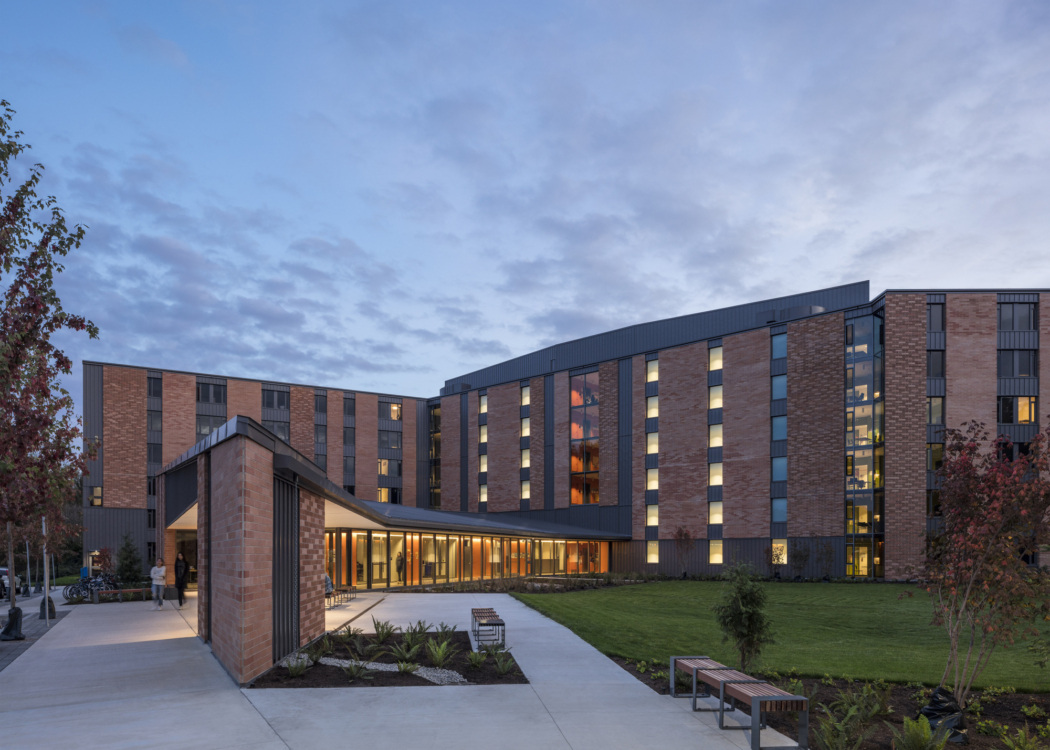
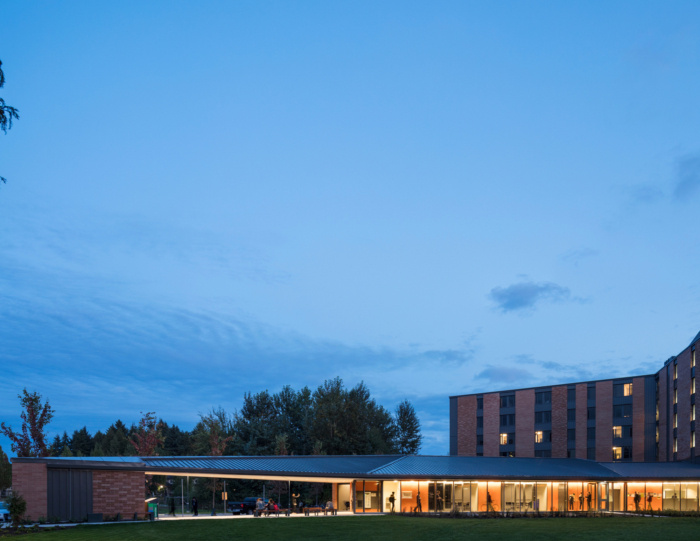
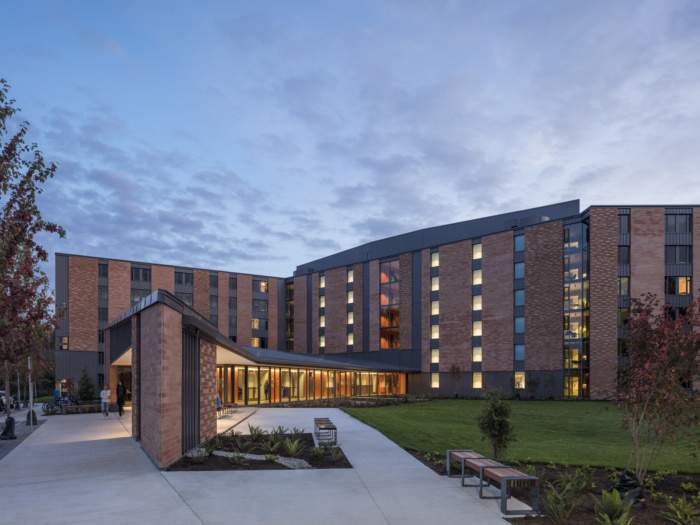
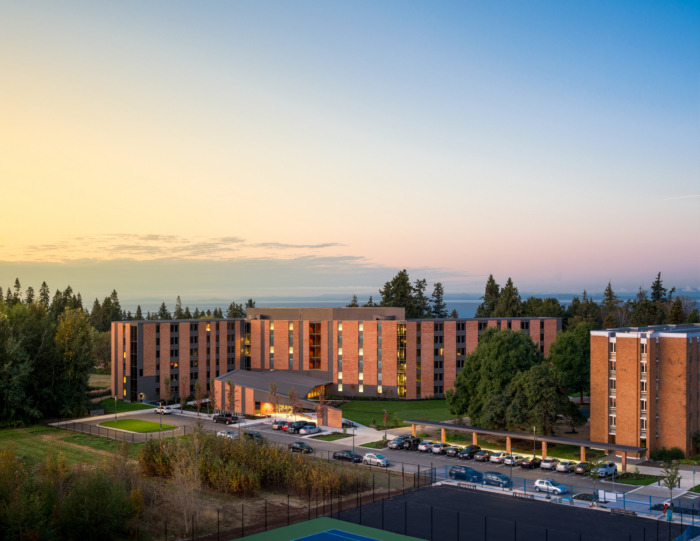

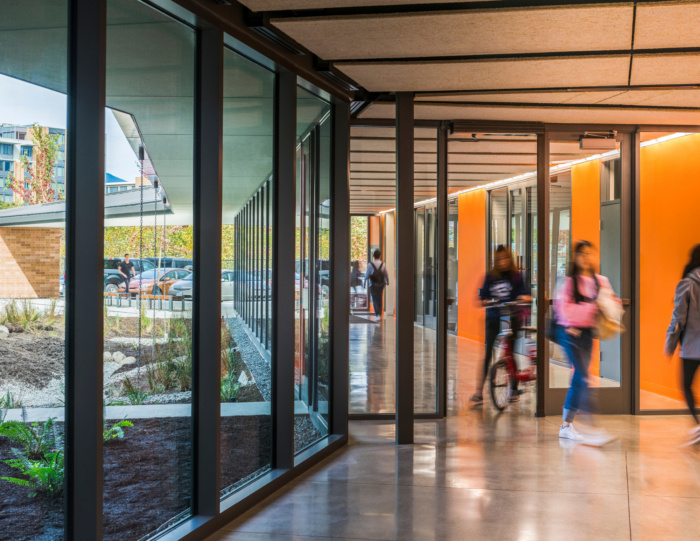
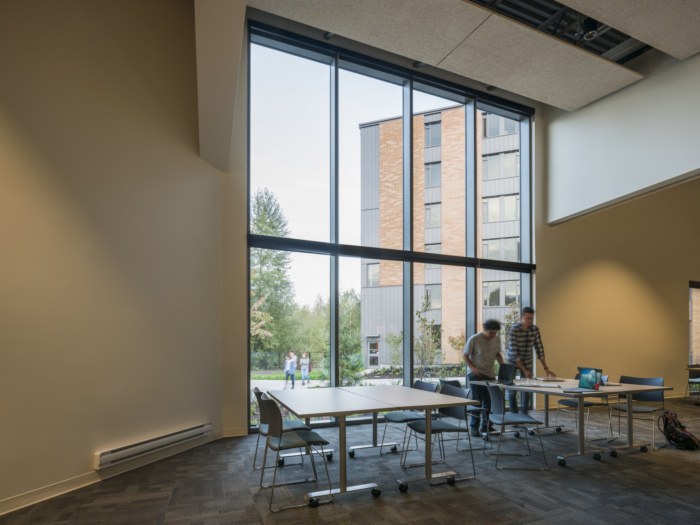

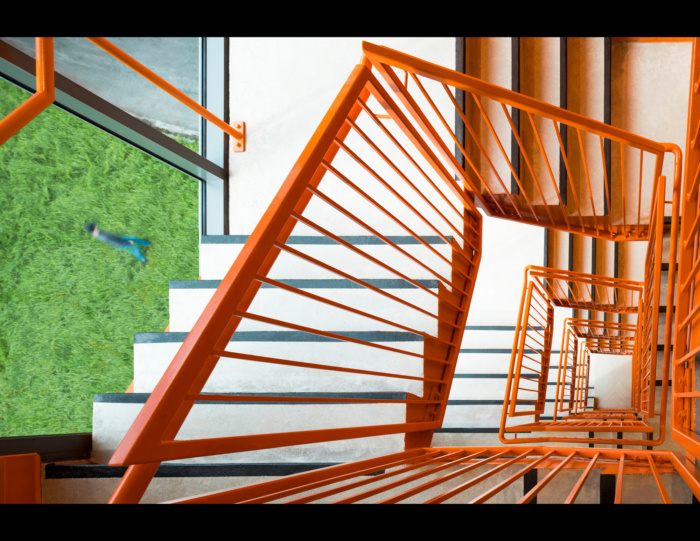



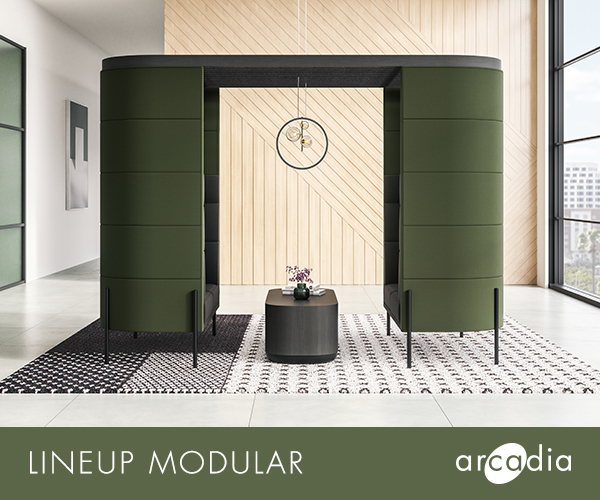
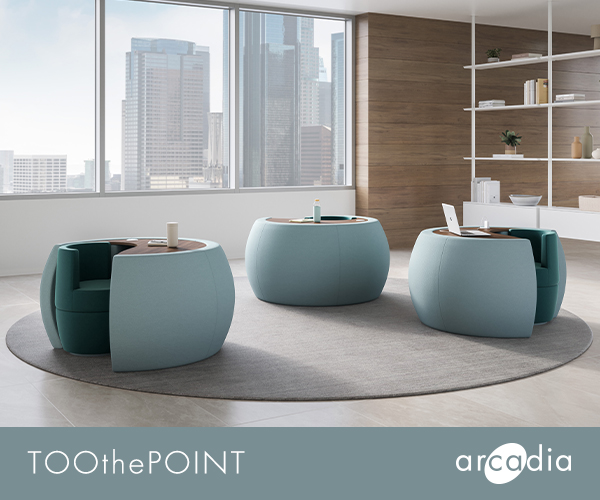




Now editing content for LinkedIn.